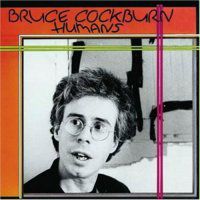 Ranked by many people as Bruce Cockburn’s best album, Humans is a watershed release in the acclaimed Canadian singer-songwriter’s stellar career. It came in the midst of tumultuous change in Cockburn’s life, following the breakup of his 10-year marriage and his move from the country to the city. After a decade of rural existence, living in a camper and then settling in tiny Burritt’s Rapids, south of Ottawa, the longtime loner took up residence in downtown Toronto. It was, he told reporters at the time, a deliberate test of his faith. “I moved with the express purpose of absorbing myself in human society to see what it was,” said Cockburn. “If, as a Christian, I was being asked to love my fellow human beings, I couldn’t love them very well if I didn’t know anything about them.”
Ranked by many people as Bruce Cockburn’s best album, Humans is a watershed release in the acclaimed Canadian singer-songwriter’s stellar career. It came in the midst of tumultuous change in Cockburn’s life, following the breakup of his 10-year marriage and his move from the country to the city. After a decade of rural existence, living in a camper and then settling in tiny Burritt’s Rapids, south of Ottawa, the longtime loner took up residence in downtown Toronto. It was, he told reporters at the time, a deliberate test of his faith. “I moved with the express purpose of absorbing myself in human society to see what it was,” said Cockburn. “If, as a Christian, I was being asked to love my fellow human beings, I couldn’t love them very well if I didn’t know anything about them.”
With 1980’s Humans, Cockburn challenged himself musically as well as spiritually. The album represented the first of his more electric, rock-oriented releases, after the trilogy of acoustic jazz folk recordings that culminated in 1979’s Dancing in the Dragon’s Jaws. The latter produced the reggae-flavored “Wondering Where the Lions Are,” which became a Top 40 hit in both Canada and the United States. Where “Lions” featured the rhythm section of Jamaican star Leroy Sibbles’ group, Humans’ anthemic “Rumours of Glory,” with its bouncy bass, added the reggae legend himself on backup vocals. Cockburn, wielding an electric guitar and backed by such new band members as violinist Hugh Marsh and keyboardist Jon Goldsmith, infused the entire album with a tougher, more uptempo sound. “I really wanted to play reggae music and rock ’n’ roll,” he
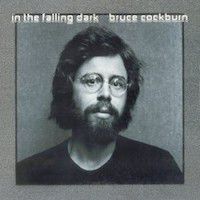 If an artist’s worth can be gauged by the degree to which his artistry evolves, then Bruce Cockburn’s value has grown immeasurably with each passing album. Over the course of 32 years and nearly as many recordings, the legendary Canadian singer-songwriter has always pushed the musical envelope. Never one to rest on his creative laurels, he has constantly tried on new ideas without ever abandoning the fabric of earlier material. The result is a rich body of work—deep, diverse and never disappointing—that stands the test of time and includes some of the most sophisticated and evocative songs in pop music.
If an artist’s worth can be gauged by the degree to which his artistry evolves, then Bruce Cockburn’s value has grown immeasurably with each passing album. Over the course of 32 years and nearly as many recordings, the legendary Canadian singer-songwriter has always pushed the musical envelope. Never one to rest on his creative laurels, he has constantly tried on new ideas without ever abandoning the fabric of earlier material. The result is a rich body of work—deep, diverse and never disappointing—that stands the test of time and includes some of the most sophisticated and evocative songs in pop music.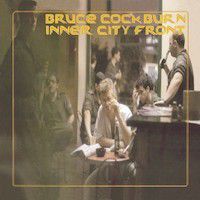 The best artists—not flavour-of-the-week pretenders, but ones who view art as life’s work—know that reinvention is a necessary part of the creative process. Think of the chameleon-like transformations of David Bowie, Bob Dylan or even U2; each has redefined themselves at key points in their careers. Cynics might charge opportunism, but there’s real danger involved with such moves, including risking one’s traditional audience. Truth is, artists need to follow their muse—to say nothing of the need to reflect new circumstances in their lives. All of this brings about changes.
The best artists—not flavour-of-the-week pretenders, but ones who view art as life’s work—know that reinvention is a necessary part of the creative process. Think of the chameleon-like transformations of David Bowie, Bob Dylan or even U2; each has redefined themselves at key points in their careers. Cynics might charge opportunism, but there’s real danger involved with such moves, including risking one’s traditional audience. Truth is, artists need to follow their muse—to say nothing of the need to reflect new circumstances in their lives. All of this brings about changes.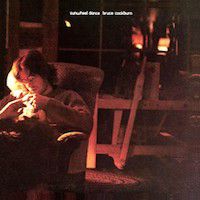 Bruce Cockburn’s third album is an undeniably joyous affair. From the Renaissance-inspired “My Lady and My Lord” to the giddy singalong “For the Birds,” Sunwheel Dance basks in warm, acoustic guitar and bright, hopeful lyrics. Taken together with Cockburn’s previous High Winds White Sky and his self-titled debut, it forms a powerful trilogy that reflects the singer-songwriter’s deep love of nature and his growing spirituality. “It was a period when I was searching but very unaware of my own inner workings,” Cockburn later explained. “There was all this optimism, even though the songs themselves may have been going in different directions. But the imagery of light was there—a lot.”
Bruce Cockburn’s third album is an undeniably joyous affair. From the Renaissance-inspired “My Lady and My Lord” to the giddy singalong “For the Birds,” Sunwheel Dance basks in warm, acoustic guitar and bright, hopeful lyrics. Taken together with Cockburn’s previous High Winds White Sky and his self-titled debut, it forms a powerful trilogy that reflects the singer-songwriter’s deep love of nature and his growing spirituality. “It was a period when I was searching but very unaware of my own inner workings,” Cockburn later explained. “There was all this optimism, even though the songs themselves may have been going in different directions. But the imagery of light was there—a lot.”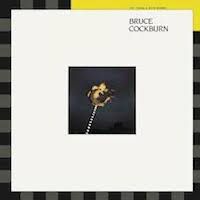 People have made a great deal of fuss about Bruce Cockburn’s activism, usually citing his song “If I Had a Rocket Launcher” as evidence of a sudden shift toward radical politics. He wrote the controversial in 1983 after making his first trip to Central America, where he visited a refugee camp that was attacked by U.S.-backed military helicopters. But, as Cockburn fans know, it wasn’t the first time the respected Canadian singer-songwriter had vented anger at imperialist intervention. He’d tackled the topic as far back as the mid-1970s, with his “Yankee gunboat” song “Burn.” In fact, Cockburn’s political views had evolved steadily, as a direct extension of his spirituality. “Can’t be an innocent bystander,” he declared on his 1981 album, Inner City Front, “in a world of pain and fire and steel.”
People have made a great deal of fuss about Bruce Cockburn’s activism, usually citing his song “If I Had a Rocket Launcher” as evidence of a sudden shift toward radical politics. He wrote the controversial in 1983 after making his first trip to Central America, where he visited a refugee camp that was attacked by U.S.-backed military helicopters. But, as Cockburn fans know, it wasn’t the first time the respected Canadian singer-songwriter had vented anger at imperialist intervention. He’d tackled the topic as far back as the mid-1970s, with his “Yankee gunboat” song “Burn.” In fact, Cockburn’s political views had evolved steadily, as a direct extension of his spirituality. “Can’t be an innocent bystander,” he declared on his 1981 album, Inner City Front, “in a world of pain and fire and steel.”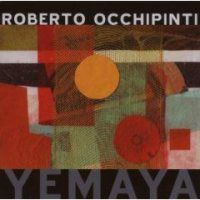 Rare is the bassist who steps forward to lead his own ensemble. Rarer still is the bandleader who successfully bridges the worlds of jazz and classical music. Roberto Occhipinti clearly belongs to that rare breed. On his first album, 2001's Trinacria, Occhipinti explored the range of Latin jazz through works by Thelonious Monk, Cuban piano virtuoso Hilario Durán and his own compositions. His follow up album, 2003's The Cusp, expanded on the concept, adding violin, flutes, reeds and horns while tackling composers as diverse as Wayne Shorter, Jimi Hendrix and Giacomo Puccini. Now, with Yemaya, Occhipinti has given full flight to his musical vision, employing horns, a string quartet and a full string symphony orchestra on classical arrangements of Cuban, Brazilian and original jazz pieces. It’s an inspired synthesis.
Rare is the bassist who steps forward to lead his own ensemble. Rarer still is the bandleader who successfully bridges the worlds of jazz and classical music. Roberto Occhipinti clearly belongs to that rare breed. On his first album, 2001's Trinacria, Occhipinti explored the range of Latin jazz through works by Thelonious Monk, Cuban piano virtuoso Hilario Durán and his own compositions. His follow up album, 2003's The Cusp, expanded on the concept, adding violin, flutes, reeds and horns while tackling composers as diverse as Wayne Shorter, Jimi Hendrix and Giacomo Puccini. Now, with Yemaya, Occhipinti has given full flight to his musical vision, employing horns, a string quartet and a full string symphony orchestra on classical arrangements of Cuban, Brazilian and original jazz pieces. It’s an inspired synthesis.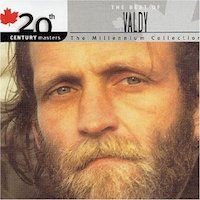 There’s still something reassuring about Valdy’s voice. Like a big Cowichan sweater, the kind the singer used to favour back in the 1970s, its sound envelops with a warm, fuzzy idealism that tells you all is right with the world—even if it isn’t.
There’s still something reassuring about Valdy’s voice. Like a big Cowichan sweater, the kind the singer used to favour back in the 1970s, its sound envelops with a warm, fuzzy idealism that tells you all is right with the world—even if it isn’t.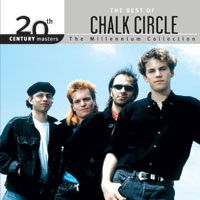 A thinking band from the 1980s, Chalk Circle was that rare group of musicians who combined socially conscious lyrics and chiming guitars in an age dominated by big hair and synthesizers. Listening to the band’s music again, what stands out is how fresh and forceful it still sounds. The songs have aged remarkably well.
A thinking band from the 1980s, Chalk Circle was that rare group of musicians who combined socially conscious lyrics and chiming guitars in an age dominated by big hair and synthesizers. Listening to the band’s music again, what stands out is how fresh and forceful it still sounds. The songs have aged remarkably well.
